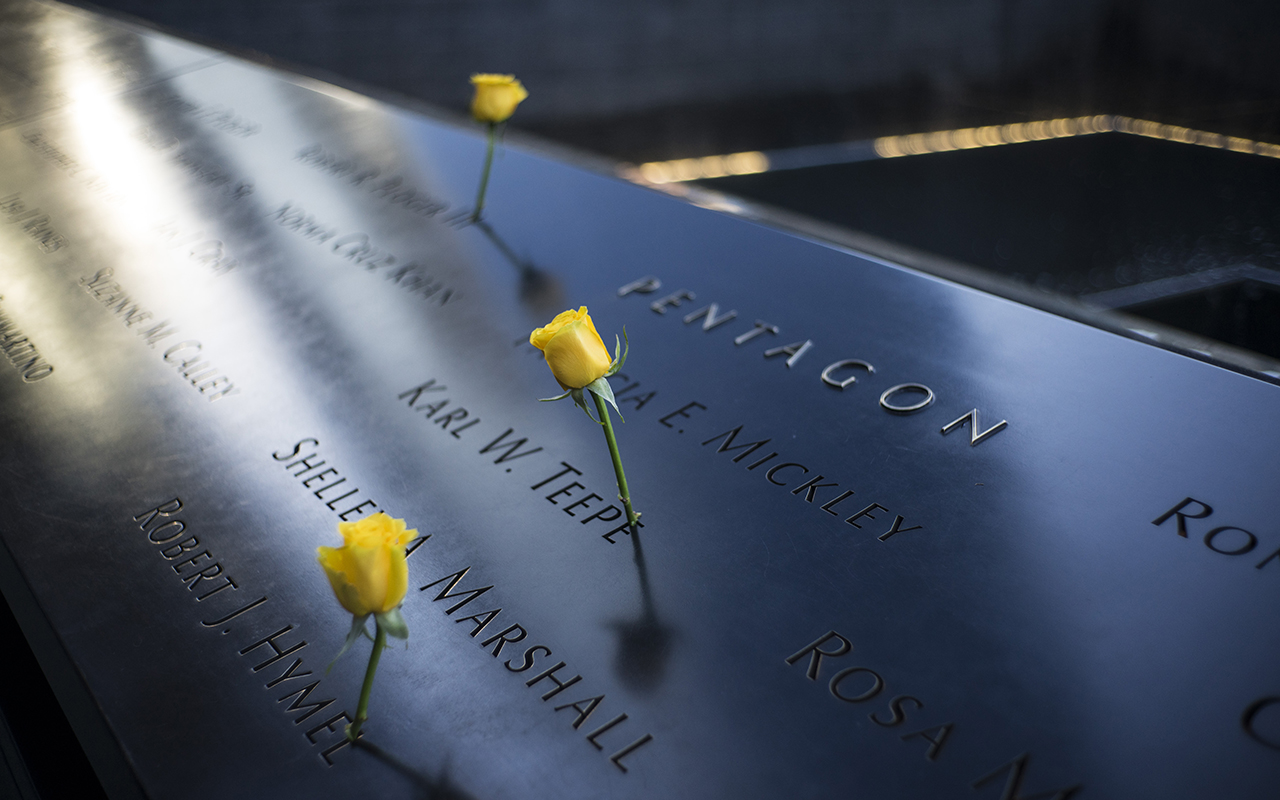About the Memorial
Located on eight acres of the 16-acre World Trade Center complex, the 9/11 Memorial is a place of remembrance and contemplation within the bustle of lower Manhattan.
Making the Memorial
In April 2003, the Lower Manhattan Development Corporation—established to oversee the revitalization of the downtown area after 9/11—launched an international competition to choose a design for a permanent memorial at the World Trade Center site. The competition was open to adults 18 years or older, without regard for nationality or professional accreditation, and yielded 5,201 submissions from 63 countries. Entries were judged by a 13-person jury that looked for designs that honored the victims, spoke to the needs of families who had lost loved ones, and provided a space for healing and reflection.
In January 2004, the design submitted by architect Michael Arad and landscape architect Peter Walker, Reflecting Absence, was chosen as the winning entry. Their design features twin waterfall pools surrounded by bronze parapets that list the names of the victims of the 9/11 attacks and the 1993 World Trade Center bombing. The pools are set within a plaza where more than 400 swamp white oak trees grow.
The Memorial opened on September 11, 2011, 10 years after the 9/11 attacks.
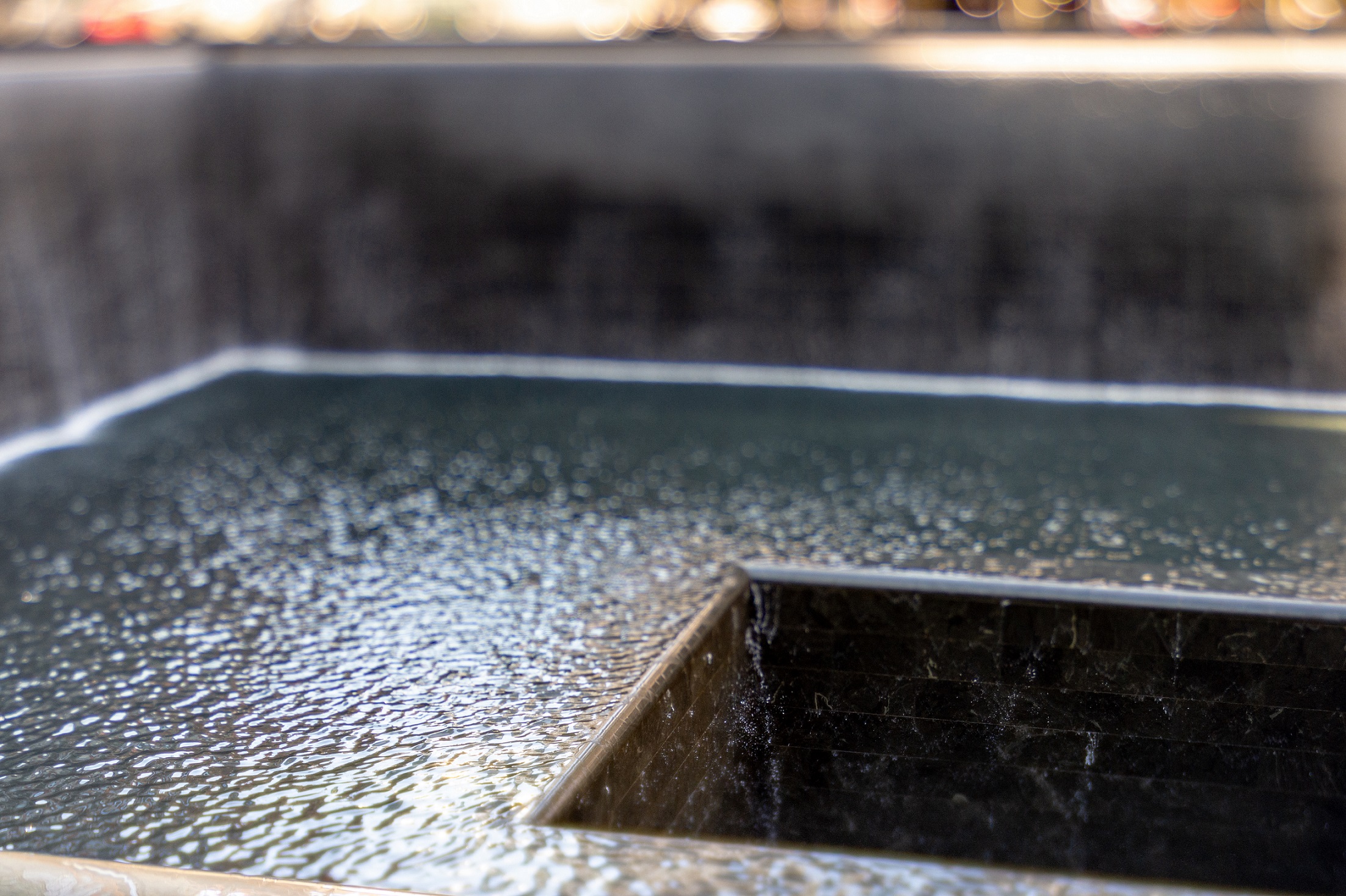
The Design of the Memorial
Memorial Pools
The focal points of the Memorial are two pools, each nearly an acre in size, that sit in the footprints of the former North and South Towers. The pools contain the largest manmade waterfalls in North America, each descending 30 feet into a square basin. From there, the water in each pool drops another 20 feet and disappears into a smaller, central void.
According to the architect, Michael Arad, the pools represent “absence made visible.” Although water flows into the voids, they can never be filled. The sound of the cascading water makes the pools a place of tranquility and contemplation separate from the bustling noises of the city.
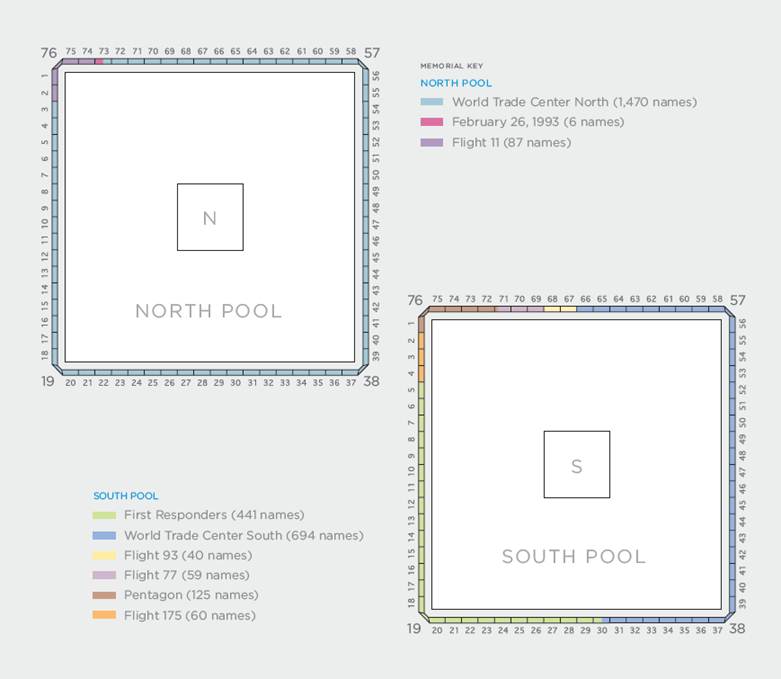
The names of the 2,983 people who were killed in the 2001 and 1993 terrorist attacks are inscribed on bronze parapets edging the memorial pools. The names are grouped by the locations and circumstances in which victims found themselves during the attacks. The North Pool parapets include the names of those who were killed at the North Tower, on hijacked Flight 11, and in the 1993 bombing. The South Pool parapets include the names of first responders as well as victims who were killed at the South Tower, on hijacked Flight 175, at the Pentagon, on hijacked Flight 77, and on hijacked Flight 93.
Within these groupings, names are arranged in a system of “meaningful adjacencies.” Friends and colleagues appear together, as well as the crews of each of the four flights and first responder agencies and units. Additionally, during the Memorial’s development, victims’ next of kin were invited to request that their loved ones’ names be inscribed alongside specific others. In this way, those who were connected in life reside together on the Memorial.
The Survivor Tree
More than 400 swamp white oak trees fill the Memorial plaza around the pools. This hardy species of tree is native to the areas of all three 9/11 crash sites: New York City; Arlington, Virginia; and Somerset County, Pennsylvania.
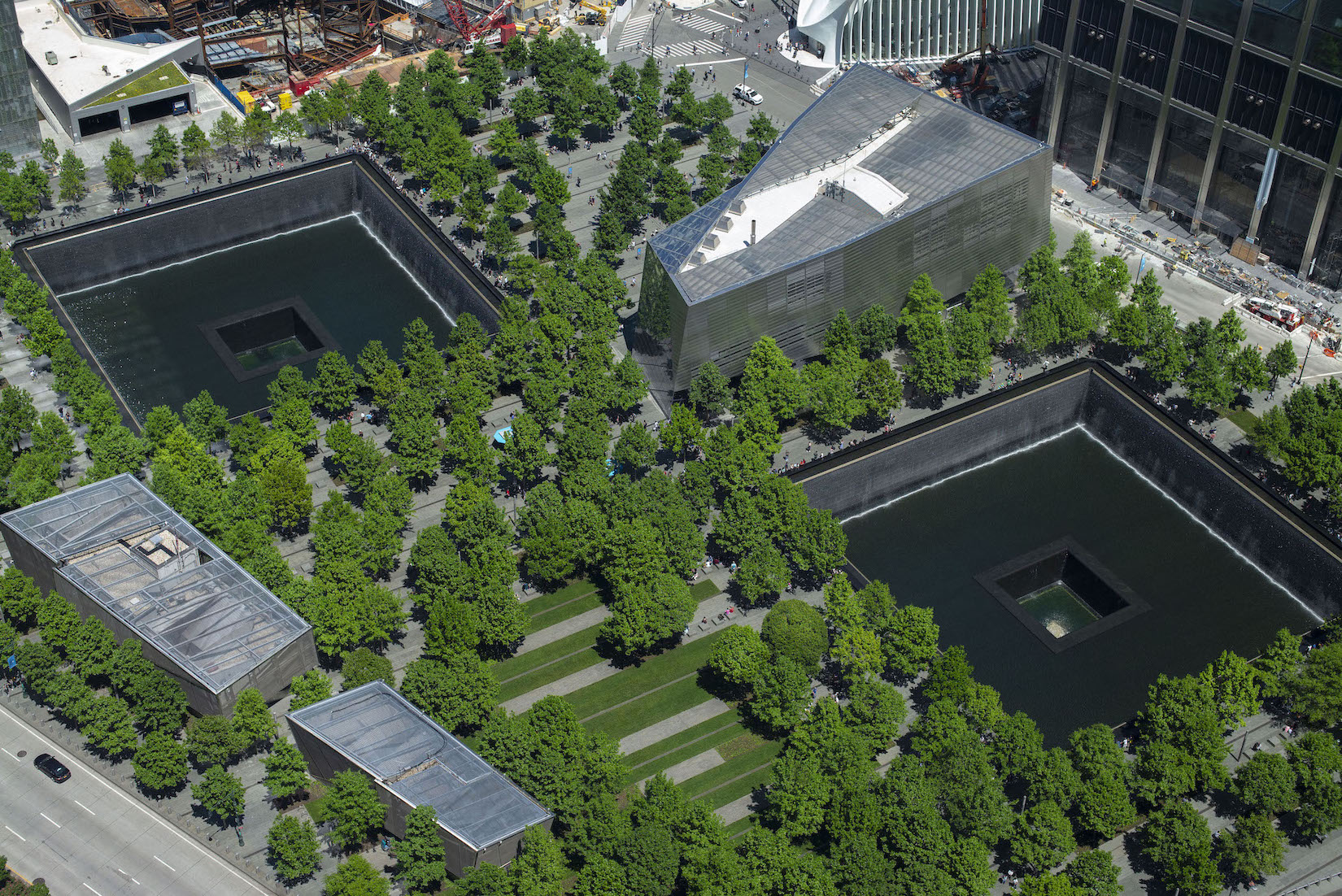
The Memorial plaza also includes one Callery pear tree. In October 2001, recovery workers discovered the severely damaged tree at Ground Zero. Members of the New York City Parks and Recreation Department removed it from the site and nursed it back to health. Having survived the events of 9/11, the tree became known as the Survivor Tree. It was returned to the World Trade Center site in 2010 and now stands on the plaza as a symbol of resilience and perseverance.
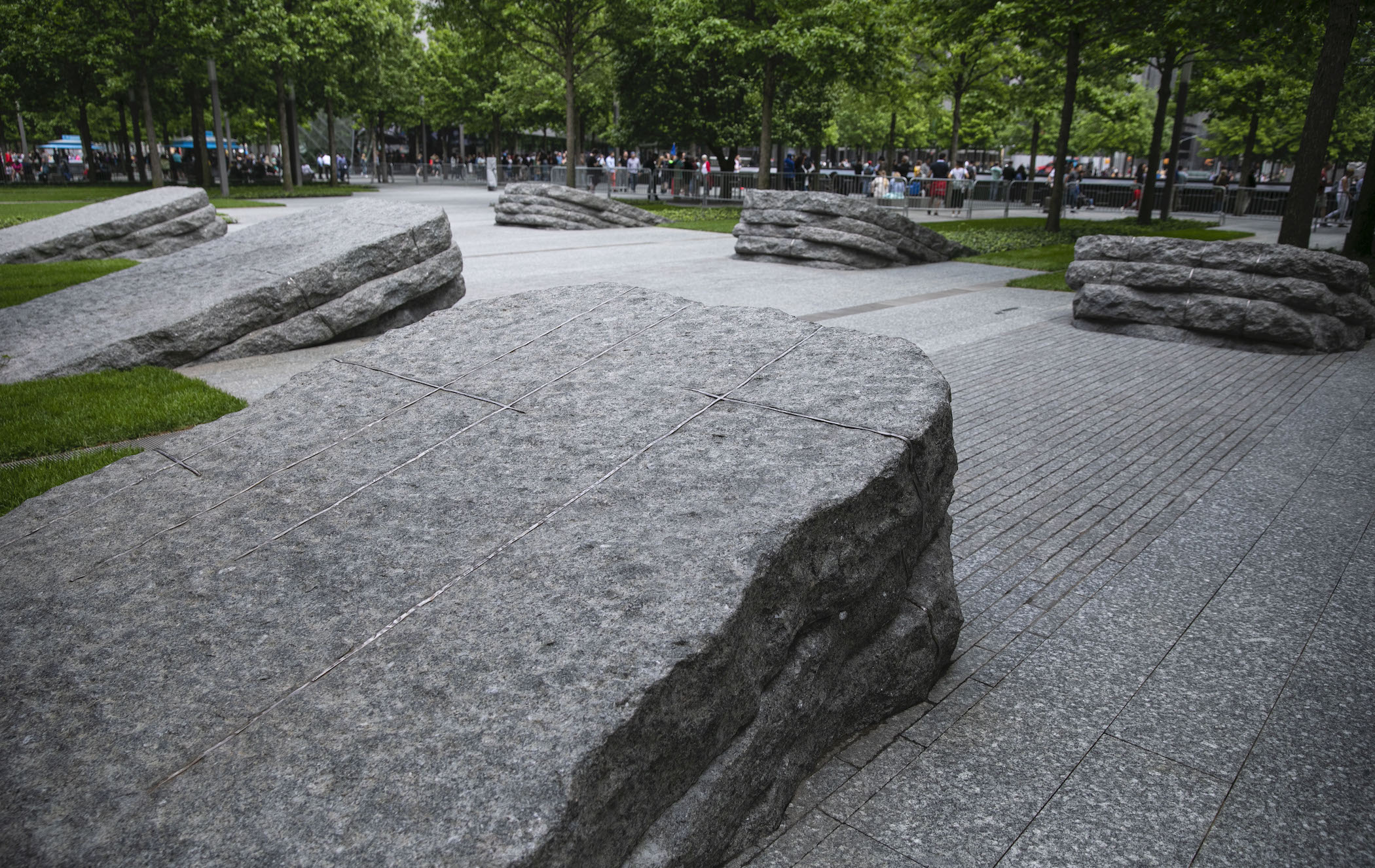
9/11 Memorial Glade
The southwestern quadrant of the Memorial plaza is dedicated in honor of all who are sick or have died from exposure to toxins in the aftermath of the 9/11 attacks. This population includes first responders and recovery workers at all three sites, relief workers and volunteers, World Trade Center survivors, and lower Manhattan residents, students, and workers, including those who cleaned buildings in the vicinity of Ground Zero. Named the 9/11 Memorial Glade, this historic modification to the Memorial also recognizes the determination and perseverance of those who participated in the recovery efforts, responding when our nation needed them most and helping to make rebuilding possible. It includes a pathway flanked by six large stone monoliths, each inlaid with remnant World Trade Center steel, symbolizing strength through adversity. The Glade opened on May 30, 2019, the 17th anniversary of the official end of the recovery period.
